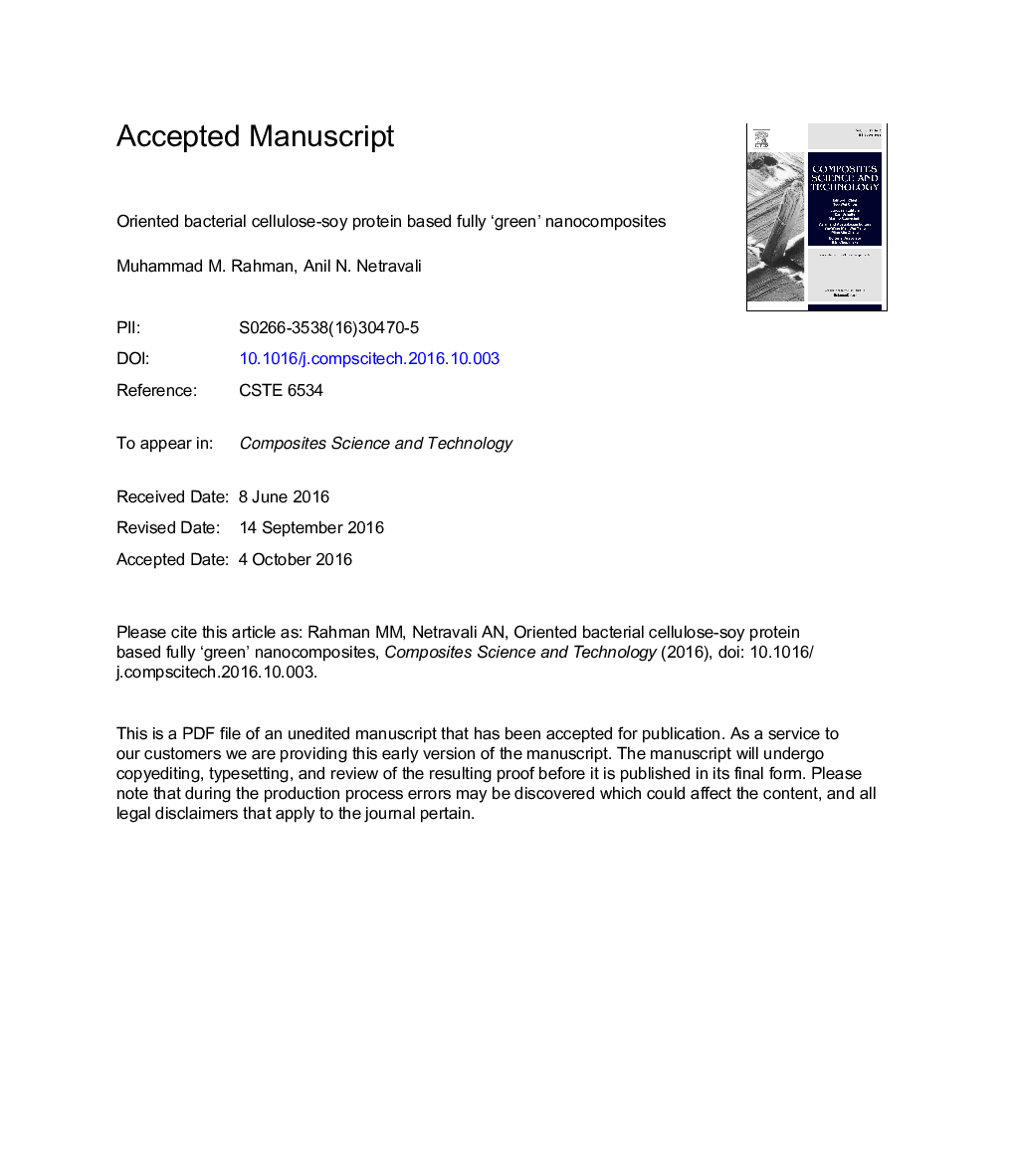| Article ID | Journal | Published Year | Pages | File Type |
|---|---|---|---|---|
| 5022418 | Composites Science and Technology | 2016 | 24 Pages |
Abstract
Bacterial cellulose (BC) nanofibrils are considered as promising biodegradable fiber-reinforcement for polymeric composites because of their excellent tensile properties. However, commonly obtained randomly-oriented web-like form of BC nanofibrils impedes achieving their full potential as reinforcement. In the present study, a facile and scalable method has been developed to orient the nanofibrils through a controlled stretching of BC hydrogel. An optimum hydrogel-stretching at the cross-head speed of 0.05Â mm/min and strain ratio of 1.2 showed substantial improvements in the orientation and mechanical properties of BC. Degree of orientation, apparent Young's modulus and fracture stress of the dried BC were increased by 117, 103 and 85%, respectively. Consequently, a BC-reinforced soy protein isolate based fully 'green' composites (BC-SPI composites) were prepared by using vacuum-assisted SPI resin impregnation into BC hydrogel and then stretching the resin impregnated BC hydrogel. The stretched BC-SPI green composites, after drying and curing, showed significant improvement in their tensile properties due to higher BC nanofibrillar orientation. This study opens up new possibilities for direct fabrication of lightweight and mechanically robust 'green' composites that can replace traditional non-degradable composites and reduce carbon footprint significantly.
Related Topics
Physical Sciences and Engineering
Engineering
Engineering (General)
Authors
Muhammad M. Rahman, Anil N. Netravali,
